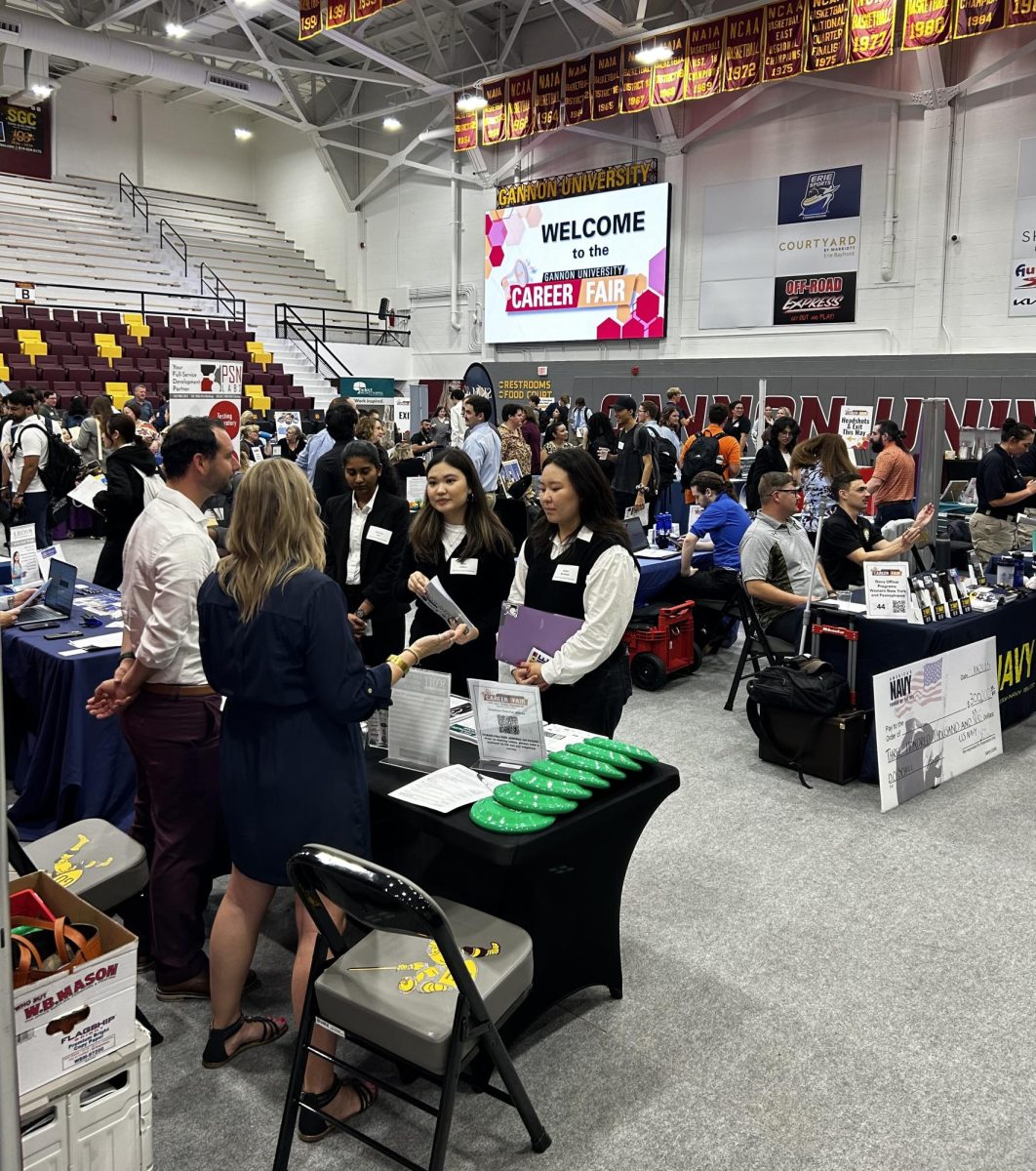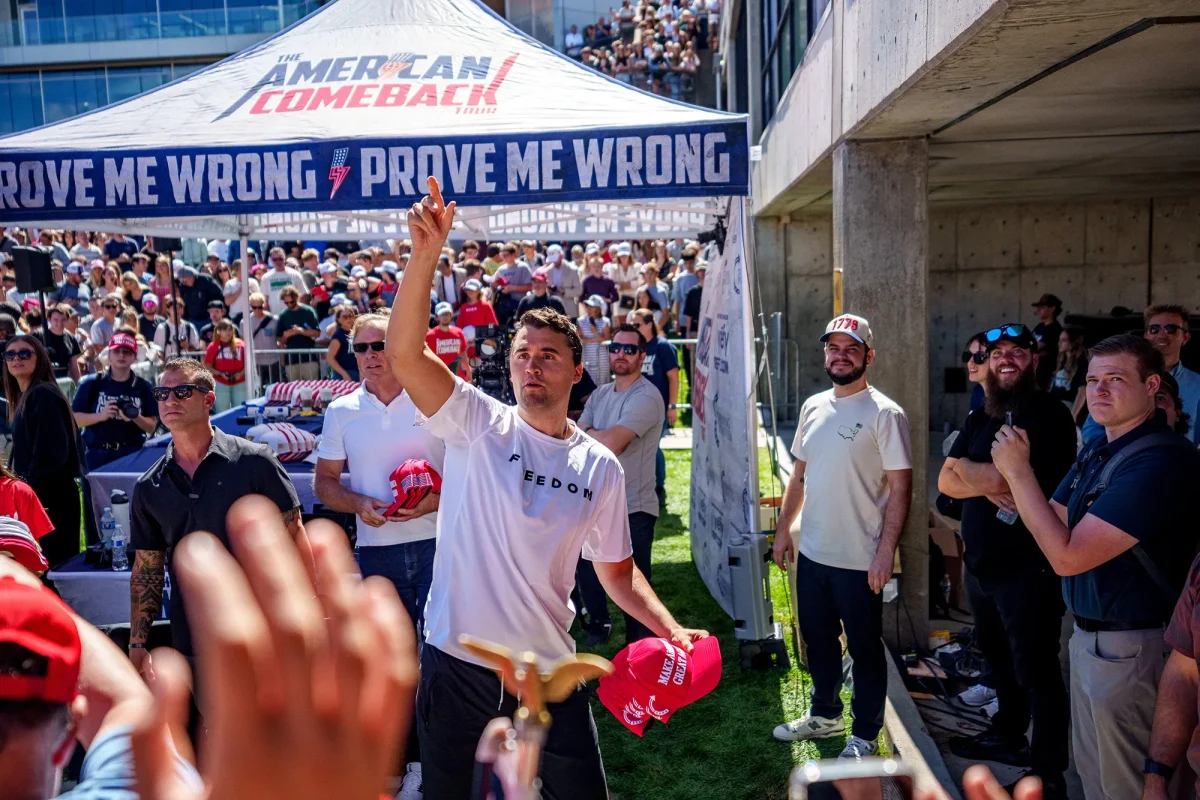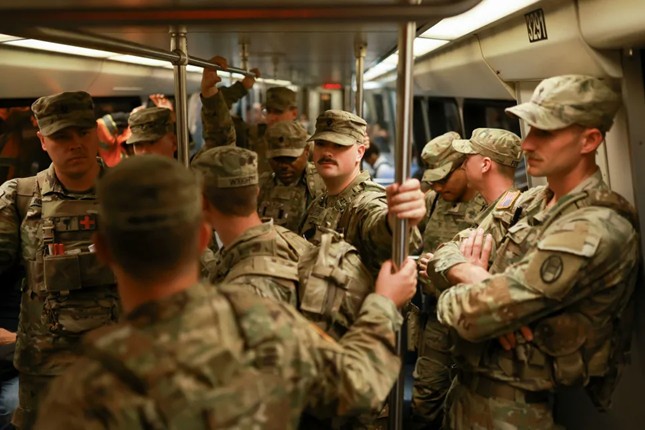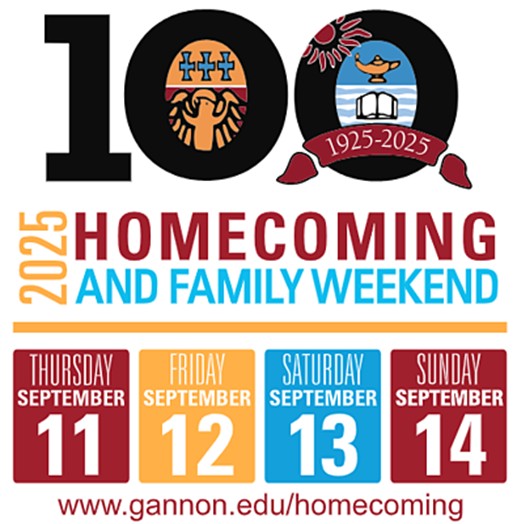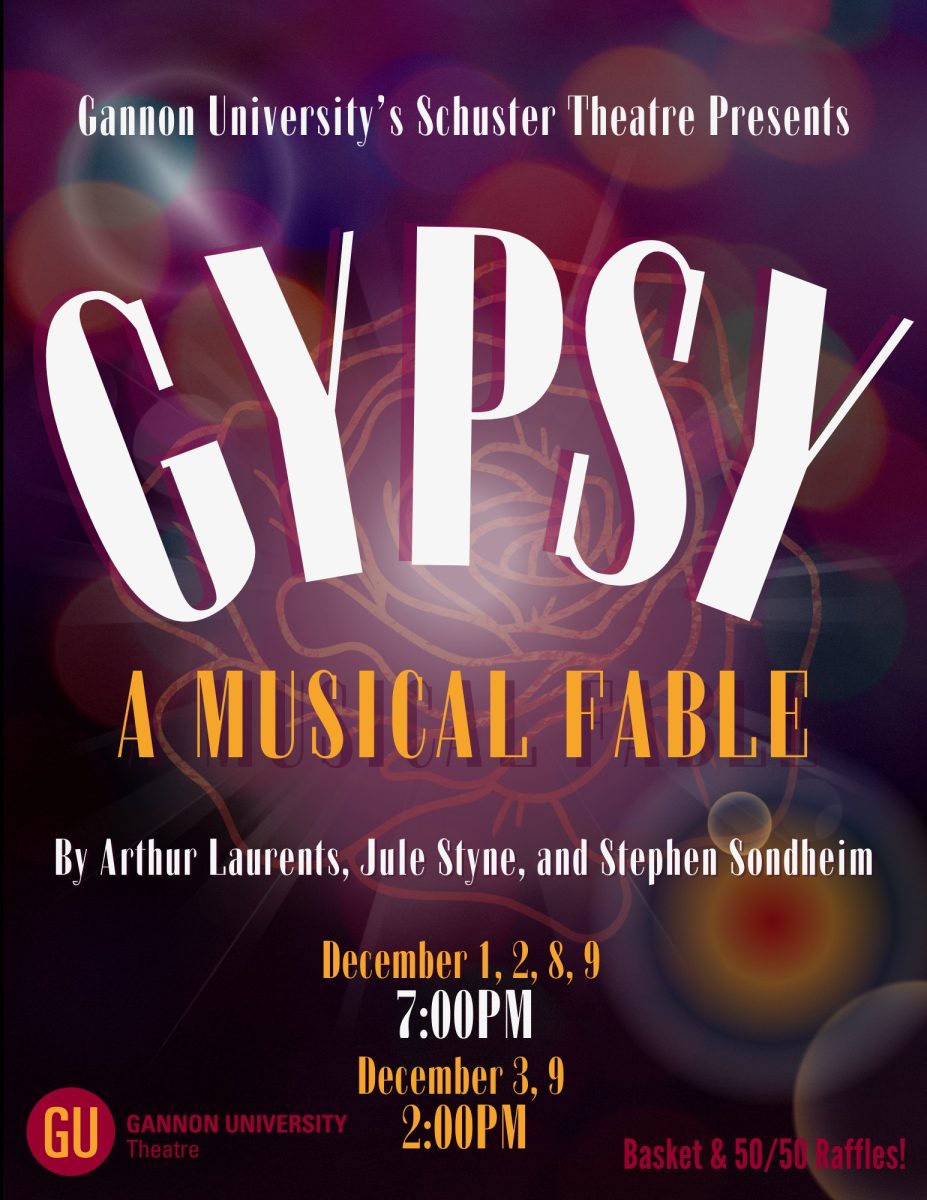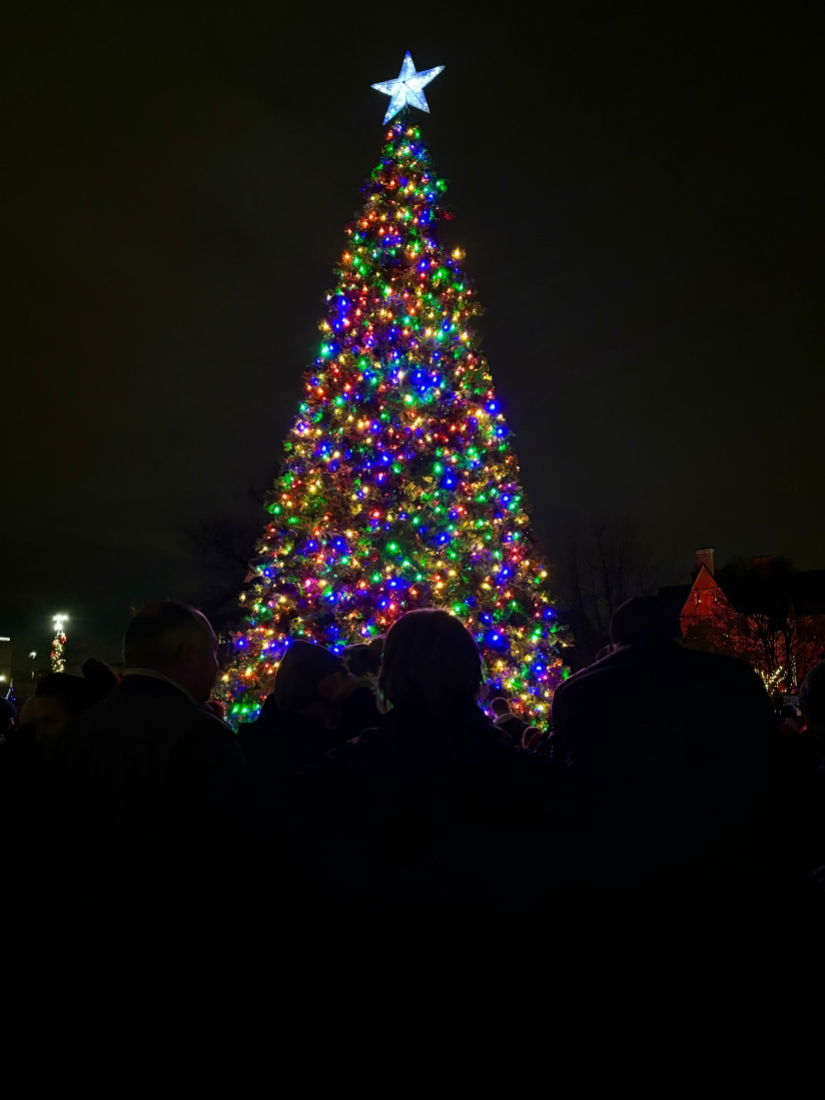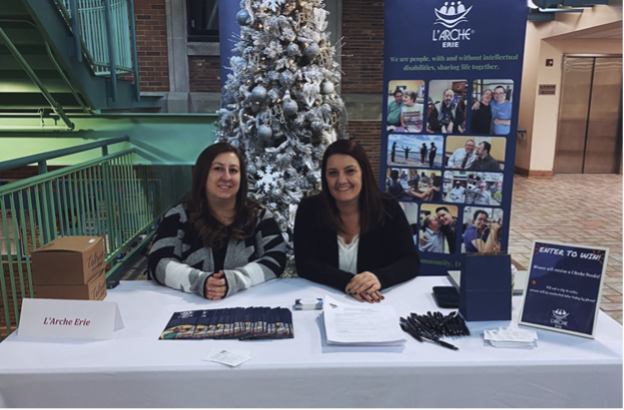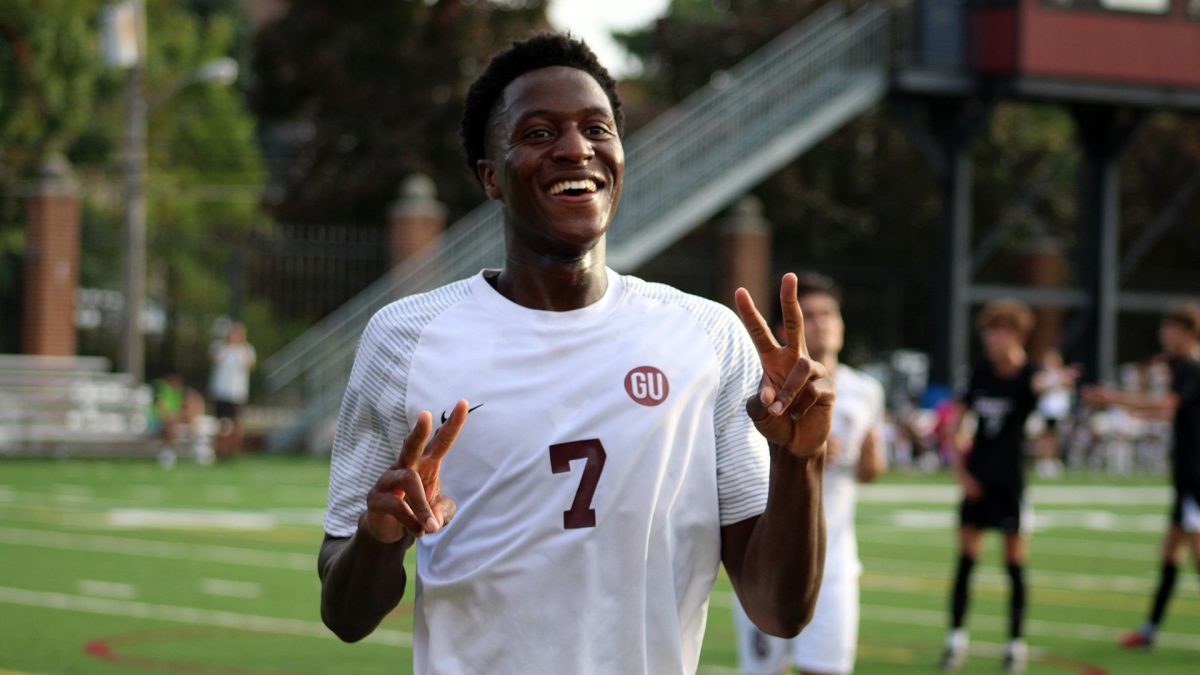After several years and five groups of students, the nearly $8,000 AJ’s Way mural project — created by muralist Ehren Knapp — was officially completed and celebrated Friday.
The idea for the mural project started in a college composition class taught by Carol Hayes, an English department instructor, in 2014.
Evan DeFalco, a member of that class, made the suggestion to create the mural, and after he and his classmates discussed the idea, the group agreed to try getting the mural added to the parking garage wall located next to AJ’s Way.
DeFalco, now a senior biology and pre-med major, was pleased with the result.
“This design of the mural is more than I could have hoped for,” DeFalco said. “I think my favorite element is just the fact that Mr. Knapp was able to fit so many parts of Gannon life onto this mural.
“The entire thing, to me, just seems very surreal since we have talked about it for so long and the mural was put up so fast once all of the funding was in place.”
DeFalco was one of several students who spoke at Friday’s celebration. Also speaking were Morgan Grzegorzewski, the Honors Program chair, and Ryan Micsky, the Honors Program vice chair.
The organizations featured in the mural were chosen by students because of their community involvement. To tie the project into her course, Hayes tasked her students to conduct interviews with a representative from each organization; the classes then voted on who they wanted to be represented.
Hayes discussed the idea with Dr. Linda Fleming, the dean of the College of Humanities, Education and Social Sciences — or CHESS — and she offered to hear the students’ proposal. Shortly after, the class created a PowerPoint and presented it to her.
“They did a fabulous job of presenting it to the dean,” Hayes said.
Immediately after getting the green light, the students ran into their first brick wall — a large white brick wall to be exact. They needed to get permission from the Erie Parking Authority prior to moving forward with their idea.
A representative, Ray Massing, from the authority visited the class. After hearing the group’s proposal, he approved the idea and offered to help any way he could.
“He has been so supportive all along — he’s a terrific person,” Hayes said.
The next obstacle was finding the right artist for the job. Three artists were interviewed, and the class decided on Knapp after interviewing him in 2015.
“I just feel so lucky,” Hayes said. “We interviewed three people and everyone just really loved meeting him.”
Knapp was offered the job and he accepted.
“I chose to work on this mural because painting murals is what I love to do and I really liked Carol’s whole vision of project-based learning for her students,” Knapp said. “I wanted to support that effort.”
After that the students needed to find a way to fund the project; several organizations contributed to the start-up costs.
In 2016 another two classes took over the project and Knapp returned with five design concepts. He presented each one to the class; the students voiced their opinions about what they did — or didn’t — like about the sketches.
“He loved hearing from the students,” Hayes said. “After all that is his work and people were taking it seriously.”
Knapp listened to their opinions and created his sixth — and final — sketch for the mural.
A few months later three of the students presented another proposal to the Student Government Association, or SGA.
The SGA chose to fund half of the costs and the remaining funding came from the Honors Program, the art department and an anonymous donor.
The last obstacle the students faced was the approval to install the mural.
They went before several committees — including the Space Committee — before the mural could be installed.
“Honestly, I kept thinking — whoops — someone’s going to look at it and say, ‘Where’s such and such?’” Hayes said. “’We can’t have this up without such and such.’
“What are the odds that everyone would be happy with what’s there?”
The project was completed in the beginning of October. The process Knapp used guarantees the mural will hold true for at least 15 years. Because he uses a newer technique, which has only been used for 15 years, there is a chance that it could last longer.
Hayes said that the mural was designed to be expanded in the future by whoever chooses to pick up the project and secure funding for it. Knapp agreed to continue working on the mural when that day comes.
Overall it took nearly 100 students working with over 25 organizations and one artist to make this project happen.
“Much of the credit for this is with Mrs. Hayes herself for being the driving force but also on her students for being so willing to make this mural a reality,” DeFalco said.
BRITTINY LENE’
[email protected]




